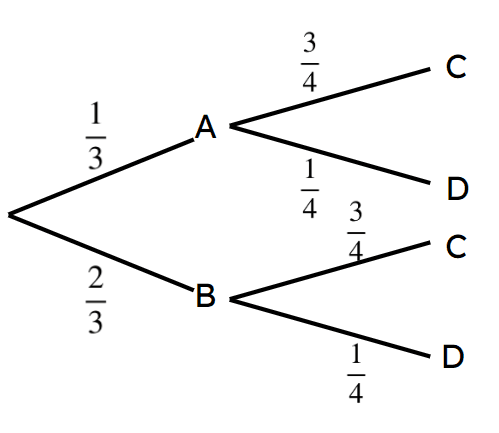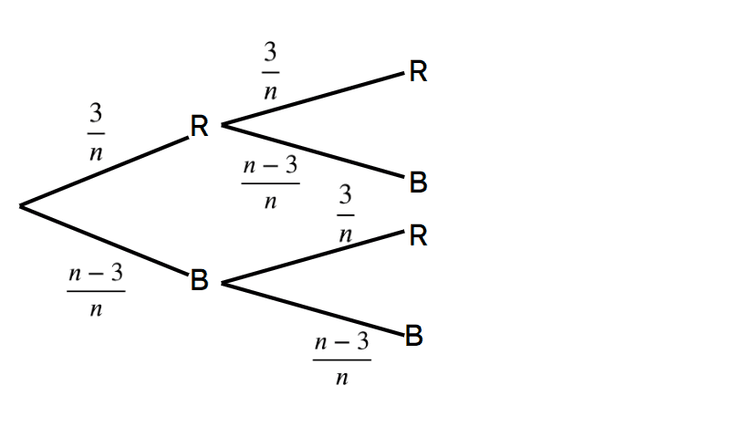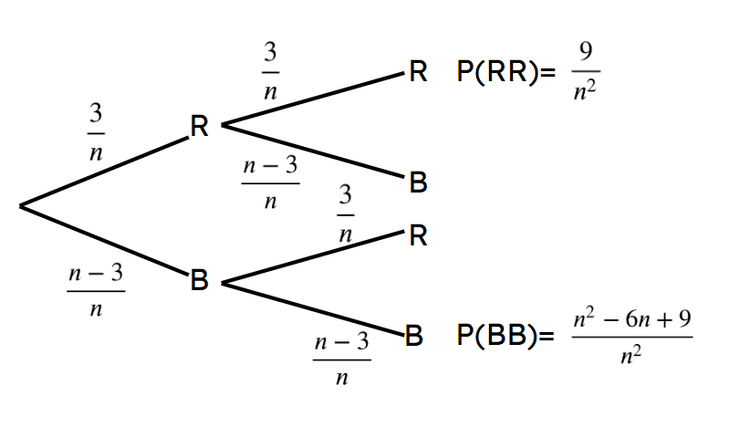Myths about teaching can hold you back


- Year 11•
- Higher
Problem solving with advanced algebraic fractions
I can use my knowledge of advanced algebraic fractions to solve problems.


- Year 11•
- Higher
Problem solving with advanced algebraic fractions
I can use my knowledge of advanced algebraic fractions to solve problems.
These resources were made for remote use during the pandemic, not classroom teaching.
Switch to our new teaching resources now - designed by teachers and leading subject experts, and tested in classrooms.
Lesson details
Key learning points
- Real world formula can be complex and contain multiple variables.
- When rearranging, you can sometimes check equivalence numerically.
- Algebraic fractions follow the same rules as fractions.
Keywords
Compound interest - Compound interest is the interest calculated on the original amount and the interest accumulated over the previous period.
Tree diagrams - Tree diagrams are a representation used to model statistical/probability questions. Branches represent different possible events or outcomes.
Probability tree - Each branch of a probability tree shows a possible outcome from an event or from a stage of a trial, along with the probability of that outcome happening.
Common misconception
Thinking the multiplier for a 2% increase is either 0.02 or 1.2
A 2% increase is 100% + 2% of the original amount. 102% is equivalent to 1.02 as a decimal.
To help you plan your year 11 maths lesson on: Problem solving with advanced algebraic fractions, download all teaching resources for free and adapt to suit your pupils' needs...
To help you plan your year 11 maths lesson on: Problem solving with advanced algebraic fractions, download all teaching resources for free and adapt to suit your pupils' needs.
The starter quiz will activate and check your pupils' prior knowledge, with versions available both with and without answers in PDF format.
We use learning cycles to break down learning into key concepts or ideas linked to the learning outcome. Each learning cycle features explanations with checks for understanding and practice tasks with feedback. All of this is found in our slide decks, ready for you to download and edit. The practice tasks are also available as printable worksheets and some lessons have additional materials with extra material you might need for teaching the lesson.
The assessment exit quiz will test your pupils' understanding of the key learning points.
Our video is a tool for planning, showing how other teachers might teach the lesson, offering helpful tips, modelled explanations and inspiration for your own delivery in the classroom. Plus, you can set it as homework or revision for pupils and keep their learning on track by sharing an online pupil version of this lesson.
Explore more key stage 4 maths lessons from the Algebraic fractions unit, dive into the full secondary maths curriculum, or learn more about lesson planning.

Licence
Prior knowledge starter quiz
6 Questions
Q1.An Oak teacher invests £1000 with 5% compound interest a year. After 4 years they will have £ to the nearest penny.
Q2.The solution to the equation $$\frac{5}{2} + \frac{x}{4}=10$$ is when $$x=$$
Q3.Write $$\frac{x}{a} + \frac{x}{b}$$ as a single fraction.
Q4.Make $$x$$ the subject of $$\frac{x}{a} + \frac{x}{b}=c$$ .
Q5.Lucas rolls a fair 6 sided die and flips a fair coin. What is the probability Lucas gets a 2 on the die and a heads on the coin?
Q6.Use the probability tree to match each event to its probability.

P(A and C) -
$$\frac{1}{4}$$
P(A and D) -
$$\frac{1}{12}$$
P(B and C) -
$$\frac{1}{2}$$
P(B and D) -
$$\frac{1}{6}$$
Assessment exit quiz
6 Questions
Q1.Sofia borrows $$(C)$$ from her brother. Her brother charges her 2% compound interest a week. After 3 weeks, Sofia owes her brother £20. To the nearest penny, Sofia borrowed £ .

Q2.A money lending firm charges 3% compound interest each month. £100 is borrowed over 2 months and £60 paid back after 1 month. After 2 months the final repayment should be £ .

Q3.A money lending firm charges 3% compound interest each month. £100 is borrowed over 2 months and repaid in two equal monthly repayments. In total £ is paid back.

Q4.There are $$n$$ counters in a bag. 3 are red and the rest are blue. A counter is picked , put back in the bag and another is picked. What is the probability of getting 2 red counters?

Q5.There are $$n$$ counters in a bag. 3 are red and the rest are blue. A counter is picked, put back in the bag and another is picked. What is the probability of getting two counters the same colour?

Q6.There are $$n$$ counters in a bag, 3 are red and the rest blue. Jun picks one, puts it back and picks another. The probability of getting two the same colour is $${5\over 8}$$. Calculate $$n$$.


